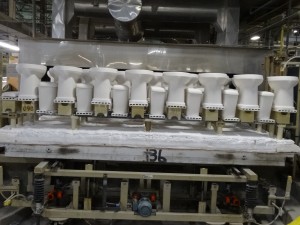The Loo, the Water Closet, the John. How many names are there for a toilet? Dozens and dozens. And that’s not even the most unusual aspect of the modern convenience that’s in every home and business in the United States.
“The modern toilet came about in 1596 when Sir John Harrington created a new type of water closet that involved a raised cistern,” says Adriana Miller, product manager at Mansfield Plumbing. “He designed a small pipe from the cistern. Water ran down that pipe when released by a valve. From that time on people have been trying to improve on the toilet.”
Mansfield Plumbing joined the toilet manufacturing scene in 1929 when it opened operations in Perrysville, Ohio. By the 1970s it marked a milestone by creating its one millionth toilet. Today more than a million toilets are manufactured by the company each year at the Perrysville facility.
Whether it’s called the Can, the Potty or the Throne, there are two “external factors” that make a toilet function — a person and toilet paper.
According to Toilet Paper Encyclopedia (an online source of endless fun facts), the average person spends three years during his or her lifetime on the toilet. And on average, consumers use 8.6 sheets of toilet paper per bathroom visit. Fast figuring computes this at 57 sheets per day, or a total annual average use of 20,805 sheets of toilet paper per year per person.
“There are so many unique facts about toilets,” says Miller. “Many people don’t know there are both one- and two-piece toilets. Others are clueless about pressure-assist versus gravity toilets. But no matter how much education we offer, it still comes down to one key factor in many households — should the toilet seat be left up or down?
“In the worst case scenario, men ‘forget’ to put the seat down and women then go ‘splash’ during a nighttime visit as a result. I think we’ve partly solved this dilemma by offering the SmartCloseTM toilet seat. With a single touch this smart seat lid closes gently and quietly, which is a great compromise for everyone in the house!”
